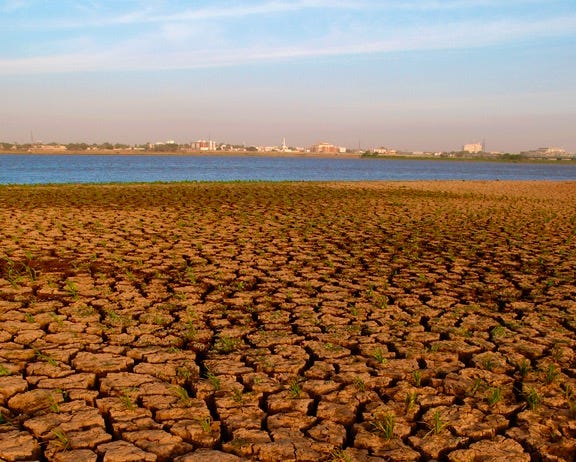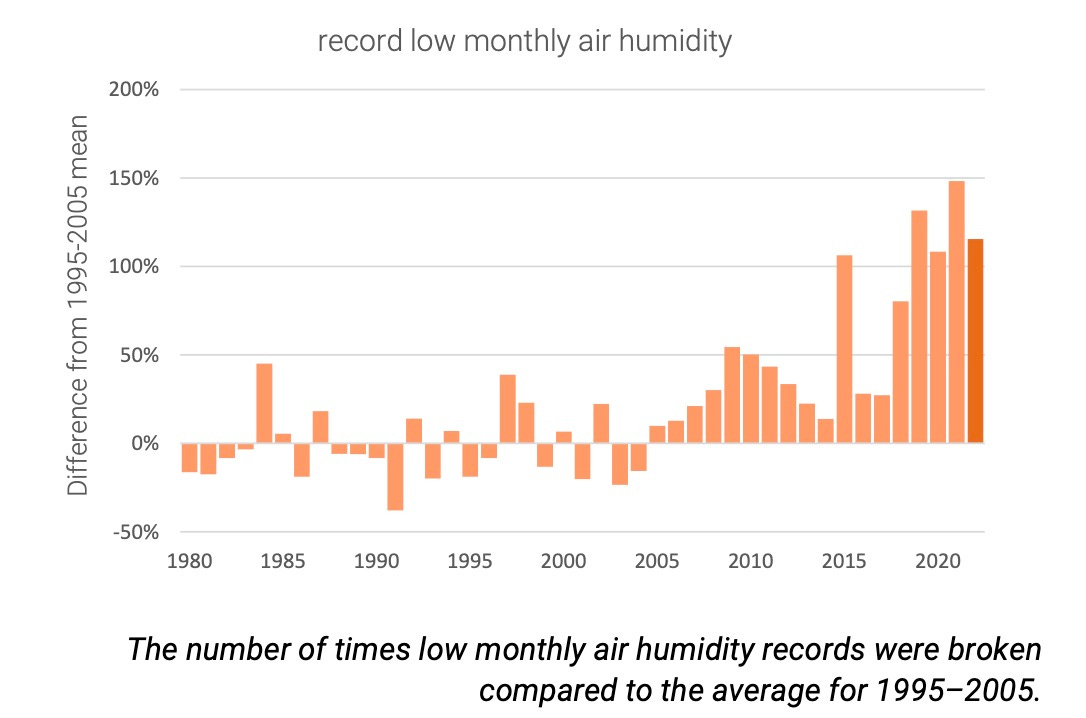A Fundamental Change to the Earth’s Water Cycle is Underway
Expect more heatwaves and flash droughts
Air over land areas has become increasingly warmer and drier, according to a new report by the Global Water Monitor Consortium. This is a fundamental change to the Earth’s water cycle driven by climate change.
“We Will See More and More Heatwaves and Flash Droughts.”
— Report co-author Albert van Dijk of the Australian National University
The report is based on multiple terabytes of 40 years of data from more than 40 satellites and thousands of ground-based weather stations. It builds the most complete and up-to-date picture of what is happening to the global water cycle.
The report found:
A 115% increase in months with record-low humidity levels in the last five years compared to the 1995–2005 average.
Months with record-high humidity have declined for the past 12 years.
A long-term trend towards more months with record-low rainfall.
Increasing trends in extreme precipitation over shorter periods (five days or less), raising the risks of local flash floods.
These results reveal a fundamental change to the Earth’s water cycle.
Need-to-Know: Land areas are heating up 2X faster than the global average
Land areas have warmed twice as fast as the global average. Higher temperatures means higher evaporation rates. This means less water in rivers, lakes and soils. Drier land conditions is bringing more wildfires, droughts, including flash droughts. (Flash droughts are unpredictable, and can develop in matter of days under hot and dry conditions.)
While the air over land is drying out, air over the oceans contains more water vapor which makes more water available for heavy-rainfall events including atmospheric rivers and monsoons.
Warmer temperatures also melt snow and ice faster. The floods in Pakistan that displaced 30 million people last year were made worse by intense heatwaves in March and April that led to a record-breaking glacier melt in the Himalayas. This raised river flows even before the torrential monsoon rains hit.
The observed change to the global water cycle can be summarized as a shift towards extreme precipitation patterns. Specifically, long periods of low or no precipitation and short bouts of intense precipitation.
Peter Gleick, a world-renowned water scientist and author of new book The Three Ages of Water who was not involved in the study, told me:
More rapidly increasing temperatures over land are driving increases in evaporation, loss of soil moisture, and overall aridification and a worsening of drought conditions, while simultaneously we're seeing more extreme precipitation events in some regions.
Need-to-Know: Higher evaporation rates bring more wildfires, droughts, including flash droughts.
Air humidity over land areas will continue to decline as temperatures increase, concludes the report. Drier air means crops will need more water to grow. With more water evaporating from reservoirs and canals there will be less hydropower generation and reduced water availability for agriculture, industry and cities.
All of this puts increased pressure on water resources.
Freshwater is the most essential natural resource on the planet. The climate-driven disruption of the global water cycle and growing water shortages around the world have enormous human welfare, economic and geopolitical implications.
Need-to-Know: Warmer ocean temperatures increases the water vapor content of the air causing wetter monsoons and atmospheric rivers.
The disruption of the global water cycle is a long-term, likely irreversible trend.
Current water resources are insufficient with 3.6 billion people who face water shortages at least a month per year. This is expected to increase to more than 5 billion by 2050.
Improvements in water and pollution management and water-use efficiency are essential. Equally essential is a rapid reduction in carbon emissions. (See NtK How Everyone can have a Decent Life with Half the Energy.)
Until next time, be well.
Stephen






